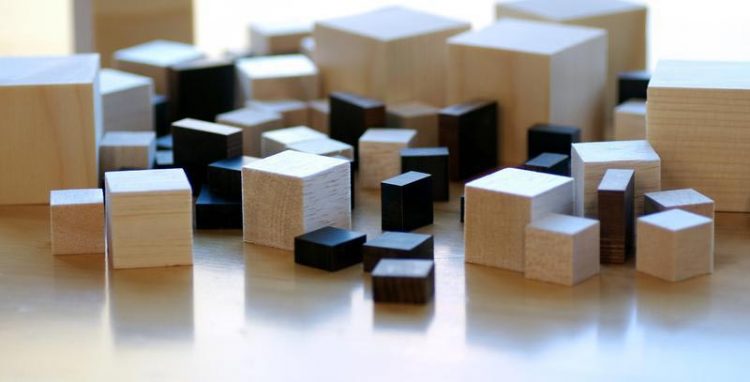With artificial intelligence to a better wood product

This modified swiss wood can replace tropical ebony in many applications. Swiss Wood Solutions AG
Wood is a natural material that is lightweight and sustainable, with excellent physical properties, which make it an excellent choice for constructing a wide range of products with high quality requirements – for example for musical instruments and sports equipment. Unfortunately, as most natural products, wood has a very uneven material structure that extends over several length scales.
Therefore, large safety margins are often required during processing, which limit the efficiency of material utilisation. With the help of science, this drawback could soon be resolved. A key technology for this is artificial intelligence.
Neuronal networks sort out flood of data
Mark Schubert works in the research department “Cellulose & Wood Materials” at Empa. In recent years, he has worked intensively on machine learning, with the goal of optimizing the functionality of wood. Schubert and his team would now like to apply this experience to other areas of wood processing.
Every processing company faces the problem of interpreting and making decisions based upon the results of the receiving inspection, which provides data on the density, moisture content, fibre direction and annual ring position of the raw wood. In order to process the wood profitably, the sequential production steps such as separation, sorting and treatment must be well planned and many process parameters set correctly.
Finally, the quality control shows whether the settings used were correct and whether the processing of the wood was successful. Employees with a sense of proportion and years of experience can often help to avoid mistakes. However, there is no holistic approach that records and analyzes the raw material and process parameters that would allow product quality to be predicted in real time.
Premiere at start-up company Swiss Wood Solutions
That's about to change. Mark Schubert analyses the flood of data produced during wood processing using deep neural networks and incorporates them into the manufacturing process. In order to implement this innovative approach, Schubert works closely with Swiss Wood Solutions, a start-up established at Empa under the management of CEO Oliver Kläusler.
The company specialises in the refinement of indigenous woods. Using a special press and know-how built up over many years, spruce or maple wood is turned into a hard, dense special material that can replace tropical ebony.
The compacted wood species have already been successfully used for violins, guitars and clarinets, as well as for practice swords of the Asian martial art Budo. Now, the existing trial production is to be significantly expanded. Last week the company ceremoniously put its first own industrial press into operation.
Together with Swiss Wood Solutions, Mark Schubert will now expand the range of experience so that high-tech hardwood products can be manufactured with consistent quality despite the growing amount of raw material processed.
Mark Schubert, Empa and the Swiss Wood Solutions team will be exhibiting at the Swiss Innovation Forum on 21 November 2019 in the Congress Center Basel.
Dr. Mark Schubert
Cellulose & Wood Materials
Phone +41 58 765 76 24
mark.schubert@empa.ch
Dr. Oliver Kläusler, CEO
Swiss Wood Solutions AG
Phone +41 79 819 72 77
klaeusler@swisswoodsolutions.ch
Editor / media contact
Rainer Klose
Communication
Phone +41 58 765 47 33
redaktion@empa.ch
https://www.empa.ch/web/s604/ai-for-wood-production
https://www.empa.ch/web/s302/bio-inspired-wood
https://swisswoodsolutions.ch
Media Contact
All latest news from the category: Materials Sciences
Materials management deals with the research, development, manufacturing and processing of raw and industrial materials. Key aspects here are biological and medical issues, which play an increasingly important role in this field.
innovations-report offers in-depth articles related to the development and application of materials and the structure and properties of new materials.
Newest articles

First-of-its-kind study uses remote sensing to monitor plastic debris in rivers and lakes
Remote sensing creates a cost-effective solution to monitoring plastic pollution. A first-of-its-kind study from researchers at the University of Minnesota Twin Cities shows how remote sensing can help monitor and…

Laser-based artificial neuron mimics nerve cell functions at lightning speed
With a processing speed a billion times faster than nature, chip-based laser neuron could help advance AI tasks such as pattern recognition and sequence prediction. Researchers have developed a laser-based…

Optimising the processing of plastic waste
Just one look in the yellow bin reveals a colourful jumble of different types of plastic. However, the purer and more uniform plastic waste is, the easier it is to…



